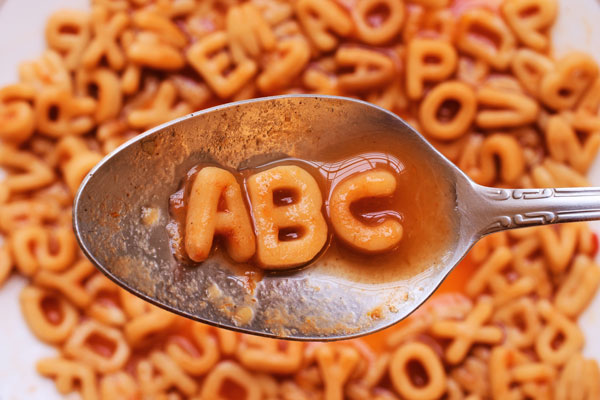Maintaining Food Safety Standards Amid Seasonal Turnover
Across the country, summer seems to bring on more than just an influx of business in foodservice operations. It also tends to bring an influx and an exodus of employees. As seasoned employees head out for vacations or move on, new hires and seasonal staff fill in, often with minimal experience. This constant churn can create gaps in food safety practices at exactly the time when warm weather increases the risk of foodborne illness. Being ready for the staffing challenges of summer all comes down to proactive planning, smart training, and reinforcing that food safety culture we often talk about.
When new employees are coming in quickly, your food safety training process needs to be efficient, consistent, and easy to deliver. Create a structured onboarding checklist that includes short, clear training on critical food safety topics: temperature control, cross-contamination, handwashing, and cleaning procedures. Make sure you have solid, job-specific SOPs (Standard Operating Procedures) for food handling that you can share with new hires. Then, once they are hired and trained, make sure you follow up to confirm they understand your policies and procedures by using a brief on-the-job quiz or hands-on demonstration.
Use visual aids, such as posters or infographics, in prep areas to reinforce key practices. Better yet, build a short training video or find your favorite video online to use and show it to new hires on their first day. If you’re not an instructor for one of the several food safety training programs available on the market, consider becoming one – they have videos and other resources that you can build into your training program. Remember that with any training, repetition is key. This is especially true for new hires who are consuming a lot of information in the first few weeks on the job. Don’t assume a one-time message will stick.
The more complicated your systems, the easier it is for something to slip. Look for ways to streamline your processes, such as using color-coded cutting boards and utensils to prevent cross-contamination. I can’t tell you the number of foodservice operations where I have seen these boards in use, but the color doesn’t really mean anything. In other words, they had good intentions by purchasing the color-coded cutting board system but didn’t really implement the use of the colors within their system, and thus, anything goes! Place thermometers and sanitizing logs in visible, easy-to-access locations. Don’t create artificial barriers that will prevent new hires and seasoned employees from doing the food safety tasks you expect. After all, when tools and expectations are clear and accessible, it’s much easier for new staff to succeed.
…By reinforcing that everyone plays a role, you make food safety a shared value, not just a task to be completed.
In a fast-paced kitchen, waiting until a six-month or yearly performance evaluation to address a food safety mistake is too late. Instead, designate a shift supervisor or manager to spot-check food safety practices throughout the day—handwashing, holding temps, sanitizer buckets, etc. Correct gently and immediately. Use mistakes as teaching moments, not just compliance failures.
Pair new hires with experienced team members who can model and reinforce good practices. These mentors can help answer questions, catch mistakes early, and build confidence in new employees.
If you have been working on creating that food safety culture where food safety is part of every shift, not just a training module, training for food safety becomes a bit less problematic. Some ways you can start doing this or continue to reinforce this are by beginning each shift with a quick safety huddle, a two-minute reminder of one key food safety point. Always encourage staff to speak up when they see something unsafe; all team members play a role, not just managers and supervisors. And be sure to include food safety behaviors in performance feedback, even for seasonal staff. By reinforcing that everyone plays a role, you make food safety a shared value, not just a task to be completed.
The reality of summer staffing challenges doesn’t have to mean lower food safety standards. With a proactive process, clear communication, and a strong culture, your team—new and “old” can keep serving safe food all year long. Risk Nothing.
READ MORE POSTS
The Alphabet Soup of Hepatitis and Why it Should Concern Foodservice Operators.
Late in July, I was made aware that World Hepatitis Day was on July 28th. I do have to be honest – similar to most of you reading this, I was surprised there was such a thing. After doing a bit of research, I discovered July 28th was named as such to recognize the birthday of Dr. Baruch Blumberg, who first discovered the hepatitis B virus in 1967 and then two years later developed the first hepatitis B vaccine. Each year, the Centers for Disease Control and Prevention and the World Health Organization recognize the day to help raise awareness about hepatitis, which impacts over 300 million across the globe and causes more than one million deaths a year.
Food Recalls: Another Important Reason to Have a Sound Traceability Program in your Foodservice Operation
Earlier in the month, I discussed a bit about the proposed traceability rules that may be coming out soon. One result of implementing the proposed rule and improving overall food traceability in your operation is the ability of those in the food chain to quickly identify and pull product involved in a food recall.
Food Traceability in Foodservice Operations: An Essential, and Soon-to-be Required, Component of your Food Safety Plan
In June, I discussed the importance of having a solid food defense plan, and I provided you some resources for developing or strengthening your food defense plan. As I was writing those blogs, my mind kept turning toward food traceability. While they are distinctly different concepts, food traceability goes hand-in-hand with a food defense program. I would argue for your food defense plan to be effective, you must have an effective internal food traceability program, where you can trace the product back to the supplier (backward traceability), but also be able to trace the product from the supplier to the guest who was served the product (forward traceability).
Food Defense Plan Resources – at just the right price…
Earlier in the month, I discussed the importance of having a solid food defense plan in place for your foodservice operation. Even if the first version of your plan is not perfect, it is a start. Having plans down on paper will force you to think through the process and ensure the vulnerable points where opportunities exist for possible contamination within the operation are mitigated.










